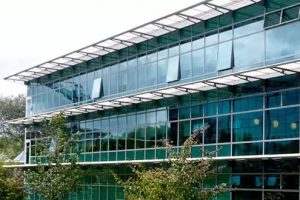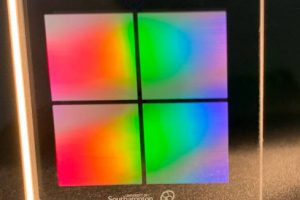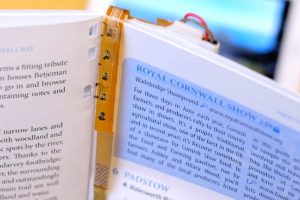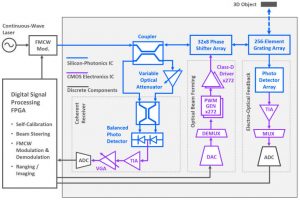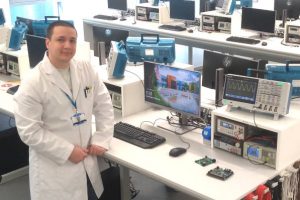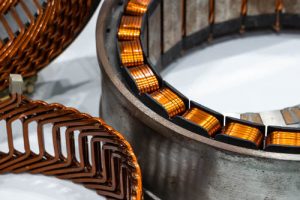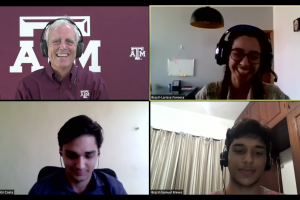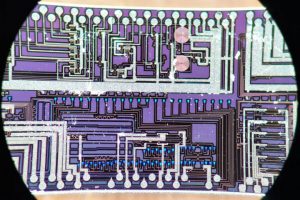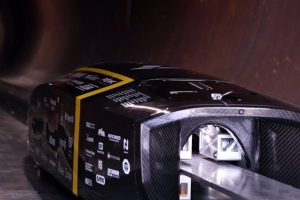The University of Surrey has created a flexible and stretchy supercapacitor “that can be easily integrated into footwear, clothing, and accessories”, it said. Building one involves transferring aligned carbon nanotube arrays from a silicon wafer over to a PDMS (polydimethylsiloxane) layer in which they are partly embedded. Polyaniline is then polymerised onto the surface of the nanotubes. In capacitors made from ...
University Electronics
The latest electronics news from UK universities
Updated: 500 terabytes of data on a CD, almost
The University of Southampton is storing data onto glass at a density that would squeeze 500Tbyte onto a substrate the size of a CD. Data is written as miniature shapes through the bulk of silica glass using the three spatial dimensions. The shapes have two separate optical characteristics – adding two more dimensions – making this so-called five-dimensional (‘5d’) data storage. ...
‘Magic bookmark’ electronically-enables plain paper books
University of Surrey researchers have been inventing ways to get electronic activity into every page of plain paper books, and have come up with two forms of ‘magic bookmark’ as they have dubbed them. Developed at Surrey’s Advanced Technology Institute and its Digital World Research Centre, the idea is that the bookmark communiates with a phone app via a bluetooth link. One of the ...
Anglia Unicorn connects dots for tech start ups
Anglia Components has broken ranks with other distributors targeting the UK’s start-ups and entrepreneurs and has launched a dedicated division, Anglia Unicorn, to put academic start-ups in touch with financial seeders and both in touch with skilled engineers who can make the vision a reality. Named after the mythical creature which eludes capture, a Unicorn company is a start-up that ...
Silicon photonics yields integrated automotive lidar chip
Tower Semiconductor has officially announced an optical automotive lidar integrated circuit made using its PH18 silicon photonics platform. PH18 uses silicon and silicon nitride waveguides to create and link optical building blocks including couplers, interferometers, radiators, modulators and photodetectors. Its low-loss silicon nitride waveguides are capable of handling the optical powers necessary for lidars. The IC was designed by researchers from the ...
Coventry University turns to Tektronix for teaching lab
Coventry University has built an 53 workstation electrical and electronic engineering laboratory in its Beatrice Shilling Building, named after the British electrical and mechanical engineer. Educational test equipment distributor of SJ Electronics supplied the instruments, all from Tektronix’ range. Intended for for first and second year students, each station has: TBS2074B 70MHz digital storage oscilloscope AFG1022 25MHz arbitrary waveform generator ...
Nottingham gets advanced motor research equipment
The UK government has sponsored the University of Nottingham to support the development of advanced electrical machines and drives for transportation and industry. In particular, Nottingham will install coil-winding equipment and instruments to characterise magnetic materials, using a grant from UK Research and Innovation (UKRI) via the ‘Driving the Electric Revolution’ part of the Industrial Strategy Challenge Fund. “We are extremely ...
Invent for the Planet 2020 winners announced
The competition for engineering students, Invent for the Planet, has announced this year’s winning projects. The competition challenges young engineers to solve real-world issues such as microplastics in oceans, sustainable airline waste management and single use plastics. Over 800 students from 40 universities in 20 countries took part in this year’s competition, run by Texas A&M University. Teams chose from ...
Bristol university makes photons for quantum computing, on CMOS
A team of physicists at the University of Bristol has used CMOS to integrate photon source suitable for “large-scale quantum photonics”, it said. “An important challenge that has limited the scaling of integrated quantum photonics has been the lack of on-chip sources able to generate high-quality single photons,” according to Bristol quantum engineer Stefano Paesani. Without low-noise photon sources, errors ...
Munich team’s winning Hyperloop vehicle
Technical University of Munich used eight electric motors with a combined power of 320kW to win SpaceX Hyperloop Pod competition in Los Angeles. Taking place on an aluminium rail within SpaceX’ mile-long evacuated tube, the 76kg carbon fibre chassis vehicle accelerated at almost 2g and reached 463km/h – before coming to a controlled halt, as the competition demands, which took 154m. ...
